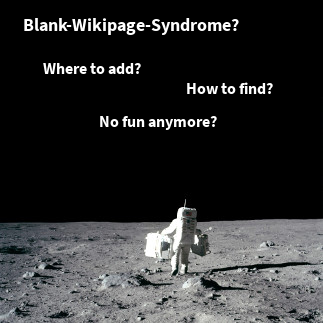To establish the technical communication for our software projects, we are using templates. This allows us to produce similar documents within our documentation, which makes it much easier to locate the information in question.
We had some discussion in the past on how to define and distinguish the terms (and therefore templates) for
- stakeholder,
- role,
- user character,
- and a person’s contact information.
We decided to define these terms in the context of our project documentation as follows:
Person
A person encloses the address information. This may be a link to a LDAP entry or an entry in the company’s address book. Its sole purpose is to record means to get in contact with the person who is a team member, external expert or client.
The term person seems a bit odd at first sight. Maybe team member or employee would fit more? But in the end you may want to add “supporting persons” to the list, too. What about consultants, authors of books, articles, blogs? If you want to document them, if there is any good reason for your project, this is the place.
Role
A role is a view on a person taking part in a project’s process or abstracting a subset of an actor’s responsibilities and privileges. According to Uwe Friedrichsen (please read his very interesting article in German!) it is helpful to have a detailed view on the tools the role requires to do its work, the requirements the role imposes on the product and the consequences for the project. It helps the developing team to investigate the demands of direct and supporting users and therefore define relevant requirements.
We do not distinguish between roles taking an active part in the project, using the project’s artifacts or have any other interest in the project. All roles relevant to a project, are documented the same way.
Stakeholder
A stakeholder maps a person to roles within a given project. A person may take part in many projects, but is only represented as a single stakeholder per project. A stakeholder may have multiple roles in a project.
The terms stakeholder and role are sometimes used interchangeable. We want to focus that a stakeholder is a real person while a role might be vacant or it may be held by persons the project does not know of individually.
User Character
A user character is an actor within a user story. Typically, if we document a user story, we have a particular role in mind. Therefore user characters and roles often map 1:1. But the actor within a user story may also be a persona or an extreme character. Both are creative tools to enhance the quality of your user stories and tighten the understanding of our problem domain.
Atlassian has published their personas on their website: Atlassian design personas. This may serve as a good example on how to define and use personas.
Templates in projectdoc
In the current version of smartics projectdoc for Confluence we provide a specific template for all these information types. This makes it very easy to pin down the information relevant to your project and make it accessible to everyone. For small teams the person and stakeholder templates may be of limited use, since the information is available without any written documentation. But if you want to document your processes, especially for introduction of new team members or further discussion within the team for process improvements, the additional effort may pay off.
Documenting the roles and user characters is usually a good idea. For small teams it may be sufficient to simply state the names of roles and user characters. Larger teams may benefit to have access to an agreed-upon document that represents the common understanding. projectdoc allows to integrate this information naturally within your Confluence Wiki due to a standard place to store and a standard template to create it.







